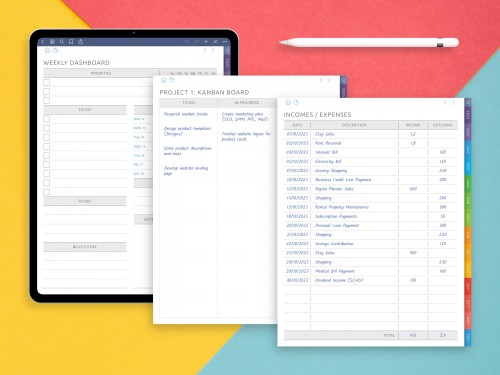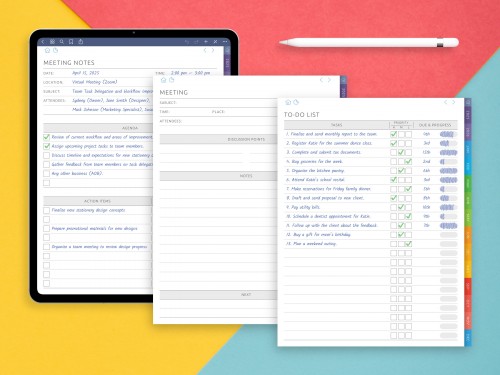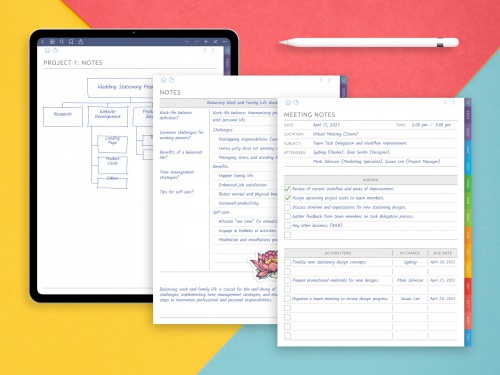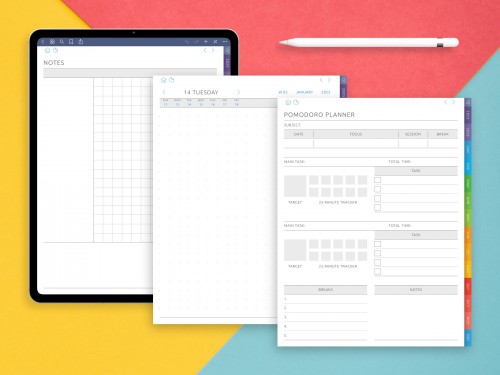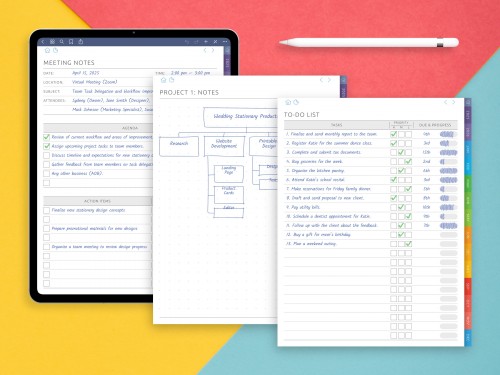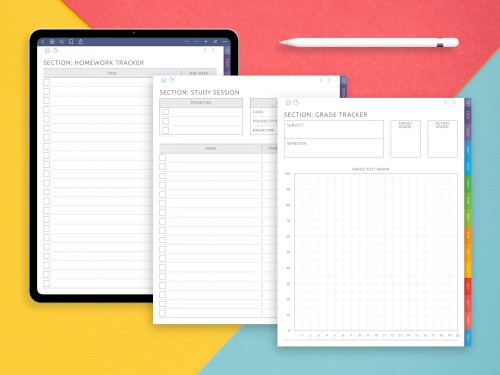Cornell Note Taking — The Best Way To Take Notes, Explained
Taking notes is more than just writing down what you hear or read, it’s about creating a system that helps you understand, remember, and review information efficiently. Over the years, many note-taking methods have been developed, but one of the most effective and widely recommended is the Cornell method. This approach has stood the test of time and is still used by students, teachers, and professionals around the world.
The Cornell system of note taking is simple in design yet powerful in results. By dividing a page into clearly defined sections, it encourages active learning, better organization, and easier review. In this guide, we’ll break down what the Cornell method is, explain how it works step by step, show examples of Cornell notes, and highlight when and why this strategy is most effective. You’ll also discover modern digital options and templates that make taking Cornell notes even more practical today.
What is the Cornell Method?
The Cornell method is a proven technique that combines active listening, critical thinking, and structured study. Developed by Dr. Walter Pauk at Cornell University in the 1950s, this technique gave students a clear format for capturing information during a lecture or reading session and then turning it into long-term retention through purposeful review.
At its core, the Cornell system emphasizes preparation and focus. Instead of filling pages with disconnected notes, learners highlight essential ideas, generate questions, and create space for analysis and reflection. This process improves comprehension, strengthens memory, and ensures that the material is organized in a way that makes later review both efficient and meaningful.
Because of its balanced structure, the method works across any academic discipline and adapts well to both paper and digital formats. It has become a universal note-taking practice used not only by students but also by professionals who need clarity and organization in their notes.
How the Cornell System of Note Taking Works
The power of the Cornell note taking strategies lies in its deliberate layout. Each page is divided into three zones that guide your practice from the moment you start writing to the final review. This built-in structure encourages better organization of information and transforms notes into a ready-to-use study resource. Let's see how to Minimalist Cornell Notes Template structured.
- Main Notes Column: The large area on the right captures details from a lecture or reading. Here you record facts, examples, and important ideas with enough space for annotations and highlighting.
- Cue Column: The narrow margin on the left is for keywords, guiding questions, or prompts that activate recall. This separation ensures that the page isn’t just passive writing but an active tool for learning.
- Summary Section: At the bottom, a brief summary condenses the main points. Writing it reinforces memory, improves comprehension, and adds clarity when you return to the material.
This format is intentionally simple yet highly effective. It supports focus during listening, aids analysis afterward, and makes preparation for exams or meetings faster and more efficient. Over time, using this technique builds stronger study habits, better retention, and a consistent method that works across every academic discipline.
Steps to Take Cornell Notes
This section shows how to take cornell notes in a clear, repeatable technique you can apply to any lecture or reading. The steps below build a routine that improves focus, comprehension, and long-term retention while keeping your notes tidy in both paper and digital formats.
- 1) Preparation: Set up the page layout with a wide notes column, a narrow left margin for the cue area, and space for a bottom summary. This structure improves organization and efficiency before you start writing.
- 2) Record: During active listening or reading, capture main ideas, terms, examples, and data in the right column. Use brief phrases and selective annotation; avoid full sentences to maintain speed and clarity. This is the core of taking cornell notes.
- 3) Reduce with Cues: After class, add keywords, prompts, and a guiding question in the cue area. This separation trains recall and directs later review and study sessions.
- 4) Recite: Cover the notes column and answer your cues out loud or in writing. This practice strengthens memory, analysis, and understanding of the discipline.
- 5) Reflect: Connect ideas, note patterns, and highlight what still needs work. Add brief highlight marks or symbols to flag tricky concepts for targeted review.
- 6) Review & Summarize: Write a concise summary at the bottom in your own words. Schedule short, spaced study sessions to revisit cues; this boosts retention and overall academic performance with the cornell method.
Follow these steps consistently, and the cornell system of note taking becomes a streamlined format that turns raw material into organized knowledge.
Examples of Cornell Notes
Seeing real examples of cornell notes makes it easier to understand how the format works in practice. Each page is divided into a main notes column, a cue margin on the left, and a bottom summary. This structure creates a natural separation that supports focus, clarity, and long-term retention.
Here is a simple text-based example filled Cornell Worksheet Template from a history lecture:
- Main Notes Column: “In 1776, the American colonies declared independence from Britain. The Declaration of Independence outlined key principles such as natural rights, government by consent, and the right to revolution.”
- Cue Column: Keywords → “1776,” “Declaration of Independence,” “natural rights.” Question → “What principles were stated in the Declaration?”
- Summary: “The Declaration of Independence (1776) asserted the colonies’ right to self-rule, listing natural rights and government by consent.”
This example shows how the Cornell technique turns raw notes into a useful study tool. By adding cues and questions in the left margin, you trigger active recall during later review. Writing the summary builds stronger memory and improves comprehension. The result is an academic practice that increases efficiency, supports deeper analysis, and makes information easier to revisit across any discipline.
Such examples of cornell notes also highlight how effective annotation and highlighting can be. Students can mark dates, formulas, or definitions, while professionals can flag project details or decisions. This flexibility shows why the method remains popular in modern academic and professional settings.
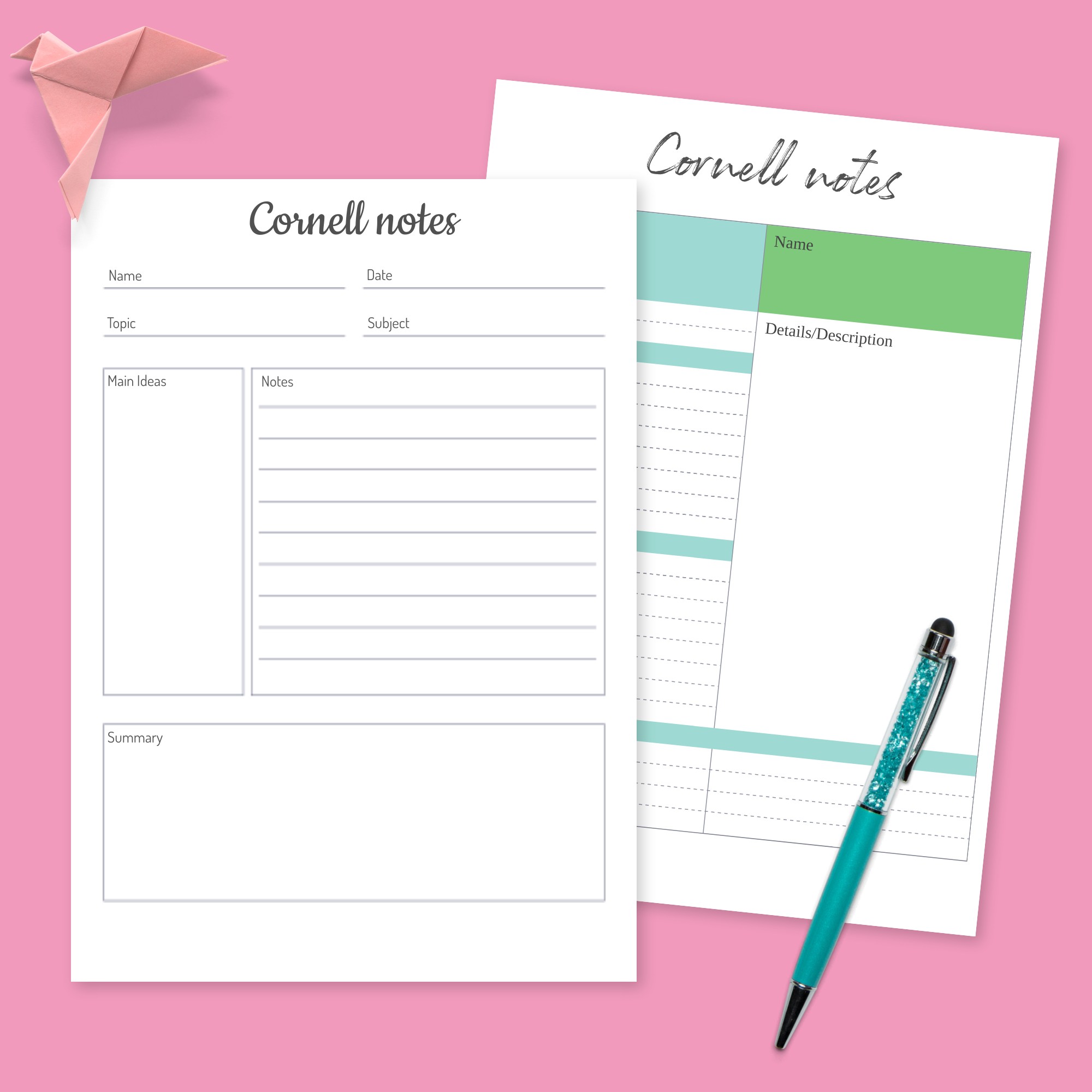
Benefits of the Cornell Method
One reason the Cornell method remains widely respected is its balance of simplicity and impact. By following a consistent structure, learners create notes that are easy to scan, quick to review, and reliable for long-term retention. The design encourages focus during a lecture and adds clarity when returning to the material later.
This method also promotes active learning. The cue area transforms passive writing into a process of asking questions, making annotations, and practicing recall. Over time, this strengthens memory and improves comprehension across different disciplines. Students benefit from faster exam preparation, while professionals gain sharper insights from meeting notes or research.
Another advantage is its adaptability. The format works equally well for handwritten pages or digital templates, supporting different learning styles. Whether used for academic study, project analysis, or self-directed reading, the method provides an efficient system for turning information into knowledge. For anyone asking, “Are Cornell notes effective?” the answer lies in decades of academic success stories and continued use around the world.
When to Use Cornell Notes
The Cornell method is flexible enough to support different situations, but it shines most when clarity, organization, and long-term retention are important. During a fast-paced lecture, the structured layout helps separate main ideas from supporting details, making later review more efficient. In reading assignments, it encourages you to slow down, ask questions, and practice analysis instead of simply copying text.
Outside of traditional classrooms, this technique is also useful in professional settings. Simple Cornell Notes Template helps you to get on with Business meetings, training sessions, and research discussions benefit from the clear format, since the cue margin keeps focus on action items and guiding keywords. Writing a bottom summary adds perspective and supports better preparation for follow-up work.
Compared with other note-taking strategies such as outlines or mind maps, Cornell notes strike a balance between speed and depth. They provide enough structure for academic study while remaining adaptable to any discipline. This makes the method particularly valuable when consistent practice, listening skills, and strong memory are needed.
Digital Options and Templates
While the Cornell method began as a paper-based technique, today it is just as effective in digital form. Many students and professionals prefer apps like Goodnotes, Notability, or OneNote because they replicate the classic page layout while adding tools such as highlighting, search, and cloud storage. This combination of tradition and technology improves efficiency and supports easier review across devices.
Printable and reusable templates are another option. These pre-drawn pages include the main notes column, cue margin, and summary area, offering ready-made formats for study sessions. Digital planners often include Cornell note templates as part of broader academic tools, giving learners a consistent system for organization and analysis.
Hybrid workflows are also popular. Some learners take notes by hand to strengthen memory and comprehension, then scan or import their pages into apps for long-term storage and annotation. Others use stylus-based tablets to capture lectures directly in digital Cornell pages. Whatever the choice, these modern options show that the Cornell system of note taking remains adaptable, supporting both traditional and contemporary academic practice.
The Cornell method has endured for decades because it combines clear structure with practical results. By dividing a page into a main notes column, a cue margin, and a concise summary, it creates an efficient format that supports focus, organization, and long-term retention. This balance makes it valuable across any academic discipline or professional setting.
Unlike unstructured notes, Cornell pages invite active learning. The use of cues and questions builds stronger recall, while writing short summaries improves comprehension and aids later review. Over time, this practice strengthens memory and develops habits that enhance both study and professional preparation.
Whether you prefer pen and paper or digital templates, the Cornell method offers a timeless technique for turning information into knowledge. Its combination of clarity, efficiency, and adaptability answers the question “Are Cornell notes effective?” with a confident yes. For anyone seeking better listening skills, improved analysis, and more organized notes, this method remains one of the best choices available.

